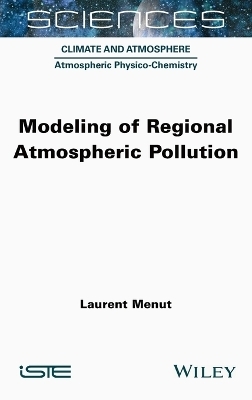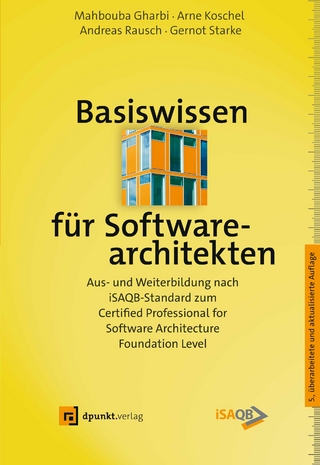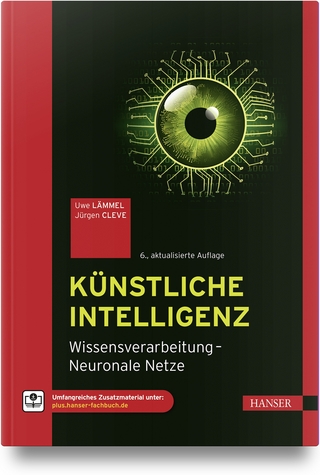
Modeling of Regional Atmospheric Pollution
Iste Ltd (Verlag)
978-1-78945-102-3 (ISBN)
Since physico-chemical principles are already widely presented in various works, the perspective chosen for this book concerns the modeling of these processes. As modeling can be a simplification of reality in a particular study framework, we will try to show whether the processes represented are well modeled or not. For each process, we will discuss the simplifying assumptions that have been made, the various possible ways for improvement and the impact of these simplifications on the desired results.
General information on pollution is presented, followed by observations, legislation, modeling of meteorology and then chemistry-transport, anthropogenic and natural emissions, depots, validation of calculations, optimization and data assimilation.
Laurent Menut is Director of Research at the CNRS and works at the Laboratoire de Météorologie Dynamique in Paris, France. He is the development coordinator of the CHIMERE model used by many institutes for the analysis of pollution cases and for operational forecasting.
Preface ix
Chapter 1 What is Atmospheric Pollution? 1
1.1 Introducing atmospheric pollution 1
1.1.1 The concept of polluted atmosphere 1
1.1.2 Where are the large polluted areas? 3
1.1.3 Atmospheric composition 4
1.2 Typical concentrations by season 7
1.3 Gas-phase chemistry 8
1.3.1 Abundance and lifetime of species 8
1.3.2 Ozone and the radical cycle 10
1.3.3 Chemical regimes 10
1.3.4 Typology of urban pollution 11
1.4 Aerosol chemistry 12
1.4.1 Abundance of aerosols 13
1.4.2 Size distribution 13
1.5 The atmospheric boundary layer 14
1.5.1 General structure 15
1.5.2 Diurnal cycle and turbulence 16
1.5.3 The urban boundary layer 18
Chapter 2 Observations and Legislation 23
2.1 Meteorological measurements 24
2.1.1 In situ measurements 24
2.1.2 Measurements through remote detection 26
2.2 Atmospheric concentration measurements 29
2.2.1 In situ measurements 29
2.2.2 Measurements through remote detection 32
2.2.3 Micro-sensors 35
2.3 Measurement campaigns 36
2.4 Databases 38
2.5 Norms and legislations 38
Chapter 3 General Principle Behind Modeling and Its Application to Meteorology 43
3.1 What is a model? 43
3.1.1 Definition of a numerical model 43
3.1.2 Journals on modeling 45
3.1.3 Different types of Eulerian models 45
3.1.4 A few current meteorological models 46
3.2 Constraints on a regional model 47
3.2.1 Definition of the domain of calculation 47
3.2.2 Initial conditions and boundary conditions 51
3.2.3 Surface data 52
3.2.4 Nudging and nesting 54
3.3 Dynamical, physical and parameterizations 55
3.3.1 Choosing the timestep 56
3.3.2 Diagnostic and prognostic variables 56
3.3.3 The boundary layer and turbulent fluxes 57
Chapter 4 Emissions 63
4.1 Introduction 63
4.2 Anthropogenic emissions 65
4.2.1 Emission inventories 65
4.2.2 Emission cadastres 67
4.3 Biogenic emissions 71
4.3.1 Flux parameterization 73
4.3.2 Databases 73
4.3.3 Intercomparison and sensitivity 75
4.4 Emissions from biomass burning 76
4.4.1 Surface emission processes 77
4.4.2 Pyroconvection 78
4.5 Mineral dust emissions 80
4.5.1 Characterization of the surface, the soil and roughness 81
4.5.2 Taking meteorology into account 83
4.5.3 Calculating emission fluxes 85
4.5.4 Examples of emission fluxes 87
4.6 Emissions from volcanoes 89
4.6.1 General information 89
4.6.2 A recent eruption: the Icelandic volcano in 2010 90
4.6.3 An older eruption: Laki in 1783 92
4.7 Emissions from lightning 92
4.7.1 Frequency of lightning flashes 94
4.7.2 Estimation of NO production 97
4.7.3 The relative part produced by CG and IC 98
4.7.4 The vertical emission profile 99
4.7.5 Intercomparisons and observations 99
4.8 Natural marine emissions 101
4.8.1 Sea-salts 101
4.8.2 Dimethylsulfide 102
4.9 Pollen 103
4.10 Summarizing information on emissions 107
Chapter 5 Deposition 109
5.1 Dry deposition 109
5.1.1 Aerodynamic resistance ra 111
5.1.2 Surface resistance rb 112
5.1.3 In-canopy resistance rc 114
5.2 Wet deposition 115
5.2.1 In convective columns 116
5.2.2 In the cloud 117
5.2.3 Below the cloud 117
Chapter 6 Chemistry-Transport Modeling 121
6.1 Principles underlying chemistry-transport models 121
6.2 Initial conditions and boundary conditions 125
6.3 Taking into account transport 128
6.3.1 Conservation of mass 128
6.3.2 The horizontal advection flux (u,v) 129
6.3.3 The vertical advection flux (w) 131
6.3.4 Turbulent diffusivity 131
6.4 Gas-phase chemistry 132
6.4.1 Chemical reactions 133
6.4.2 Solvers 134
6.4.3 Chemical mechanisms 135
6.5 Aerosols 136
6.5.1 Size distribution 137
6.5.2 Internal/external mixing 137
6.5.3 Aerosol models 138
6.6 Coupling meteorology and chemistry 142
6.6.1 Coupled models 142
6.6.2 Direct effects 144
6.6.3 Indirect effects 145
6.6.4 Uncertainties and future prospects 146
Chapter 7 Qualification and Optimization 149
7.1 Qualification of modeling results 149
7.1.1 Is it possible to qualify or validate a model? 149
7.1.2 Are the results accurate? 149
7.1.3 Evaluation statistics 150
7.2 Comparisons with measurements or inter-model comparisons 153
7.2.1 Comparisons with routine measurements 153
7.2.2 Comparison with satellite measurements 154
7.2.3 Comparisons with measurement campaigns 154
7.2.4 Inter-model comparisons 156
7.3 Statistical adaptation or tuning 159
7.3.1 Modifications to input parameters 159
7.3.2 Modification of results 160
7.4 Scenarios 160
7.4.1 Meteorological scenarios 160
7.4.2 Emission scenarios 160
7.4.3 Scenarios related to a process in the model 162
7.5 Sensitivity studies 162
7.5.1 Sensitivity through direct modeling 164
7.5.2 Sensitivity through adjoint modeling 164
7.6 Ensemble calculations 167
7.7 Machine learning 171
Chapter 8 Data Assimilation, Inverse Modeling and Forecasting 173
8.1 Data assimilation 173
8.1.1 Sequential assimilation 175
8.1.2 Variational assimilation 176
8.1.3 Applications of data assimilation 177
8.1.4 Gain from data assimilation for pollution 178
8.2 Inverse modeling 179
8.3 Forecasting 182
Chapter 9 The Impacts of Atmospheric Pollution 185
9.1 The impact of pollution on climate 185
9.2 The impact of climate on pollution 187
9.3 The impact of pollution on health 188
References 193
Index 239
| Erscheinungsdatum | 11.05.2024 |
|---|---|
| Verlagsort | London |
| Sprache | englisch |
| Gewicht | 680 g |
| Themenwelt | Mathematik / Informatik ► Informatik ► Datenbanken |
| Informatik ► Software Entwicklung ► User Interfaces (HCI) | |
| Naturwissenschaften ► Geowissenschaften ► Geologie | |
| Technik ► Umwelttechnik / Biotechnologie | |
| ISBN-10 | 1-78945-102-7 / 1789451027 |
| ISBN-13 | 978-1-78945-102-3 / 9781789451023 |
| Zustand | Neuware |
| Informationen gemäß Produktsicherheitsverordnung (GPSR) | |
| Haben Sie eine Frage zum Produkt? |
aus dem Bereich


